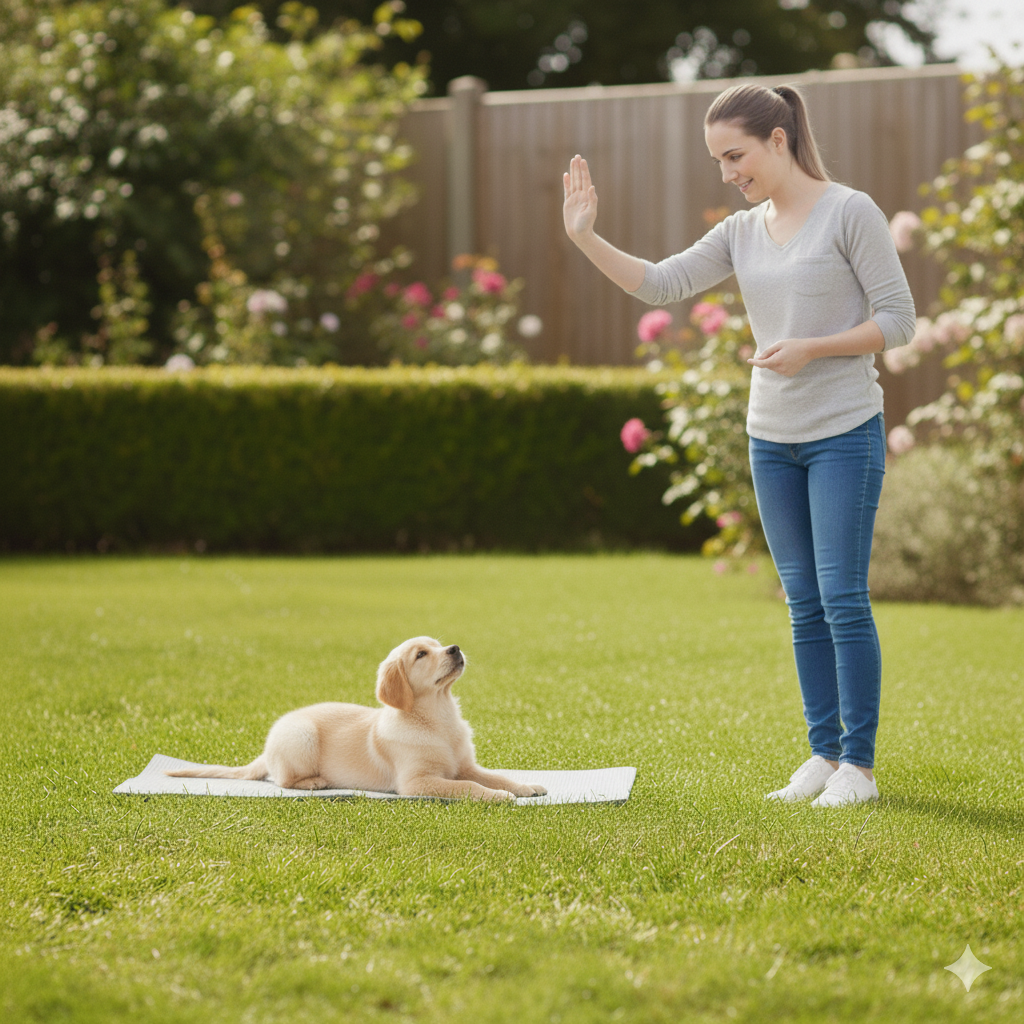How to teach your puppy to stay
What you’ll need:
High-value treats
Teaching a puppy the "stay" command is a cornerstone of obedience training and a valuable life skill for their safety and your peace of mind. It requires patience and breaking the process down into small, manageable steps. The key is to build duration, distance and distraction gradually.
1. Start with sit
Before you can teach "stay", your puppy needs to reliably know a "sit" or "down" command. The "stay" command is a continuation of that position.
Start your training in a calm, familiar place with minimal distractions, like your living room, and have some of your puppy's favorite, small, soft treats ready.
2. Introduce the cue
Ask your puppy to "sit" or "down" and verbally praise them for doing so. As soon as they are in the position, say "stay" in a calm, firm voice and present a hand signal—a flat palm facing your puppy, like a "stop" sign.
Wait one or two seconds, reward with a treat and then give your "release word" like “okay” or “all done”. The release word is crucial, as it tells your puppy the command is over and they can move. Make sure to reward your dog while they are still in the “stay” position and not after they have moved.
Keep repeating this process, gradually increasing the duration by just a second or two at a time. If your puppy breaks the "stay", don’t scold them; simply guide them back to the starting position and try again with a shorter duration.
3. Add distance
Once your puppy can "stay" for 5-10 seconds with you close by, you can start to add distance. Ask for the "sit" or "down" and "stay" as before, then take one small step backward. Immediately step forward to your puppy, reward and release them. The key is to always return to your puppy to reward them for the "stay", so they learn the command is not over just because you moved away.
Gradually increase the number of steps you take away from your puppy. A good rule of thumb is to take one more step at a time. If they break the "stay", go back to the distance they were successful at and try again.
4. Add distractions
When your puppy can stay with you a few feet away, it's time to introduce distractions. Begin with subtle distractions that are easy for your puppy to ignore. Try jingling your keys or dropping a toy on the ground.
If your puppy stays put, reward them generously. If they get distracted and break the "stay", go back to a less distracting environment and a shorter duration.
Slowly increase the level of distraction. This could include walking around your puppy, having another family member walk by or practicing in a different, more stimulating room in the house.
Once your puppy is comfortable with these distractions in a familiar environment, you can start practicing in new, more challenging places, like your garden or a quiet park.
5. Mastery
Once your puppy has a good grasp of duration, distance and distraction individually, you can start to combine them. For example, ask for a 5-second "stay" from three feet away while a family member walks by.
Training sessions should be brief, no more than 5-10 minutes and end on a positive note. This keeps your puppy engaged and prevents them from getting bored or frustrated.
Never call your puppy out of a "stay". Always walk back to them to give the release command. Calling them will eventually confuse the command and teach them that "stay" means "stay until I call you." This can break the command's reliability.
Patience is essential. Teaching "stay" is one of the most challenging commands because it goes against a puppy's natural instinct to follow you.
Mastering the "stay" command provides a critical tool for your dog's safety and your peace of mind. Remember to be patient, celebrate small successes, and always end your training sessions on a positive note. By building on the foundations of duration, distance, and distraction, you will give your dog a reliable and life-saving skill.
Check out our other blogs in our puppy training series:
Join the waitlist for early access to Sit Happens. We’re building the ultimate dog training app to make dog training easier and more fun than you can imagine.
